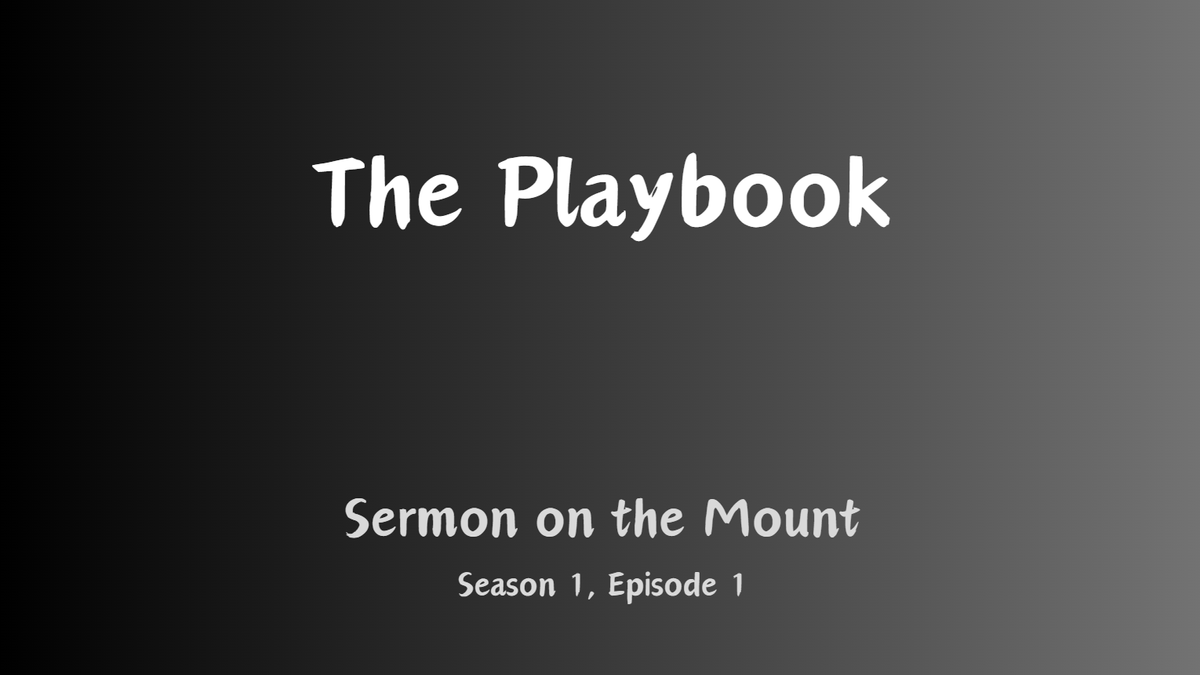The Bible: A Divine Inspiration Wrapped in Human Experience (The Bible, Part Six)

A remarkable collection of texts
The Bible is a remarkable text, revered not only for its divine inspiration but also for the profoundly human experiences that shaped its formation. This unique blend of divine inspiration covered with human fingerprints offers a rich tapestry of spiritual significance, filled with metanarratives that weave together the magnificent story of God. It is abundant in symbolism and metaphors, employing ancient storytelling techniques that captivate the imagination and invite readers to explore deeper meanings.
To truly appreciate the Bible for what it is and how it was written, it’s essential to move beyond rigid inerrancy and strictly literalistic interpretations, which make it difficult to see beyond the words and between the lines where much of the deep meanings are found. Diving into its depths encourages readers to engage with diverse perspectives, historical contexts, and theological insights. Doing this can uncover profound insights that enrich our understanding of the text and its relevance in today’s world.
Divine Inspiration and Human Fingerprints
Understanding the Bible as both a divine inspiration and a human creation invites us to rethink traditional views of strict inerrancy. In his insightful work “Who Wrote the Bible?”, Tim Mackie highlights a fascinating point: if God operates in the world through people, it only makes sense that His word would find expression in human language. The Bible's human elements aren't just footnotes; they're the colorful channels through which the divine message flows, enriched by the authors' cultural, historical, and personal contexts. This interplay of the divine and the human gives the scriptures a depth that resonates with readers across generations.
Genesis tells us that humanity is God-breathed, and the same can be said for the Bible, as emphasized in 2 Timothy 3:16-17, which asserts that all Scripture is God-breathed and useful for teaching, rebuking, correcting, and training in righteousness. This divine inspiration isn't just a relic of the past; it is alive and active today, beckoning us to engage with it in our daily lives and guiding our moral and spiritual paths into the future.
Millard J. Erickson, in "Introducing Christian Doctrine," beautifully underscores the profound mystery wrapped in the Bible's dual nature when it comes to God's communication with us. He points out that this duality not only enriches our understanding but also reflects the complexity of God’s relationship with humanity. John Wesley backs this up, asserting that divine inspiration and human judgment coexist harmoniously. While the message originates from God, its expression is often shaped by the inspired individual's unique insights, cultural background, and creativity, resulting in a rich tapestry of perspectives that can be appreciated in various ways.
Engaging with the Bible, then, becomes a dynamic interaction of faith intertwined with reason, tradition, and experience. We respect its human context while fully embracing its profound divine message. As we delve deeper into its pages, we discover layers of wisdom, guidance, spiritual truths, and theological principles that speak to our lives today. This exploration invites us to ask questions, seek understanding, and apply its teachings to our contemporary context.
Challenges of Literalism and Inerrancy
Strict literalism and rigid inerrancy can complicate the interpretation of the Bible, causing the reader to overlook and misunderstand the profound and essential meanings embedded within Scripture. These perspectives and lenses of interpretation can cause us to miss out on the rich images of truth found within its pages—poetry, parables, and allegories—all meticulously crafted to convey deeper truths that go beyond the surface level of mere words.
Let me explain.
A literal interpretation of the opening chapters of Genesis, with an exclusive focus on scientific explanations, can detract from the profound theological messages deeply woven within these texts. Genesis 1-3 provides a narrative of creation and a rich theological framework that explores themes of divine sovereignty, humanity's unique role in creation, and the nature of relationships between God, humans, and the world. By focusing solely on aligning these chapters with modern scientific theories, one risks missing the profound insights about the nature of God as Creator, the intrinsic value imbued in creation, and the foundational understanding of human identity and purpose.
At the other end of the Bible is the Book of Revelation. Its metaphorical language is packed with vivid imagery and complex symbolism, revealing profound spiritual insights into the human experience and divine nature. When we try to interpret these passages literally, we risk misunderstanding their true meaning and may overlook the broader context in which they were written. By embracing their symbolic nature, we can unlock a richer and more rewarding understanding of the messages they hold, allowing us to connect with the text on a deeper emotional and intellectual level.
These examples, along with many others found in Scripture, encourage us to embrace an approach that transcends strict literalism and rigid inerrancy. Instead, we should recognize Scripture as authoritative, relevant, and reliable. The Church of the Nazarene’s Article of Faith on the Holy Scriptures underscores their divine authority and significance as foundational texts guiding our faith and behavior. The Scriptures present all that is necessary for salvation, articulating these truths clearly and comprehensively.
Through the canonization process, the texts that form the Bible have been affirmed as authoritative within the church. The Bible’s relevance is rooted in its timeless teachings and principles, which apply across various contexts and eras. Its reliability is evidenced by the consistency of its message across diverse authors and centuries, as well as the transformative impact it has had on countless lives. This trustworthiness is further validated by scholarly research, which confirms its textual integrity and lasting influence within the church.
Appreciating the Metanarrative and Symbolism
Engaging with the Bible's "big story" (its metanarrative) means recognizing how all its different texts are intricately connected. From Genesis to Revelation, the Bible narrates God’s profound relationship with humanity through themes such as creation, fall, redemption, and restoration. Each book contributes uniquely to this grand narrative, encouraging us to dive deeper into its meaning and discover how these ancient texts still resonate in our lives today.
For example, the theme of creation not only illustrates God's power but also sets the stage for understanding our place in the universe. The fall highlights human frailty and the consequences of our choices, while redemption showcases God's unwavering commitment to restoring that relationship through Jesus Christ. Restoration, the final theme, offers hope for the future and reminds us of the promise of new beginnings.
Symbolism plays a crucial role in conveying spiritual truths as well. Take Jesus’ parables, for instance; they are rich with metaphors that teach us valuable moral and spiritual lessons. For example, the parable of the prodigal son powerfully illustrates God's endless love and forgiveness, demonstrating that no matter how far we stray, we are always welcome back into His embrace. Understanding these symbols not only enriches our comprehension of biblical narratives but also deepens our connection to the teachings that have shaped spiritual beliefs for centuries. By exploring these connections and symbols, we can uncover the profound wisdom the Bible offers to guide us daily.
The Role of Oral Tradition and Storytelling
The Bible has deep roots in oral tradition and storytelling, highlighting its human side and the rich tapestry of experiences that shaped it. These stories, filled with moral lessons, cultural insights, and historical contexts, were passed down through generations, often shared around campfires or communal gatherings. This oral transmission not only preserved the essence of the narratives but also allowed them to evolve, reflecting the beliefs, values, and challenges of the communities that embraced them. Eventually, these tales were written down, solidifying their place in history while continuing to echo the culture of their times.
Understanding this intricate tradition helps us grasp how the Bible came together as a cohesive text, rich in layers of meaning and interpretation. The process of oral storytelling also meant that these tales could be reinterpreted and adapted to fit various audiences, allowing for a dynamic engagement with the material. This back-and-forth process of adaptation added to the Bible's diversity and flexibility, making it relevant across different contexts and eras. By engaging with this rich tradition, today’s readers can truly appreciate the Bible's enduring relevance and ability to resonate across various times, cultures, and personal experiences. Ultimately, the stories within the Bible are not just historical accounts; they are living narratives that invite reflection and connection.
Conclusion
The Bible is a fascinating mix of divine inspiration and human creativity, offering a wealth of spiritual insights and guidance that have influenced countless lives throughout history. We can and should immerse ourselves in its rich tapestry of stories, intricate symbolism, and overall messages more meaningfully. This approach enhances our understanding of the texts and helps us connect more deeply with their teachings and the broader human experience they reflect.
This journey of reading, understanding, and applying Scripture to our lives is a journey that we cannot take alone. One way to do this is by joining a discussion or study group at your church. Such interactions often lead to thought-provoking conversations that challenge our viewpoints and inspire new insights. As we read, share, and discuss the Scriptures, we rely on the Holy Spirit's work to continue breathing life into the Scriptures as we read them prayerfully. Not only that, but the Holy Spirit breathes life into us as well as we reflect, discuss, meditate, and apply these words of life into our own lives.











Member discussion